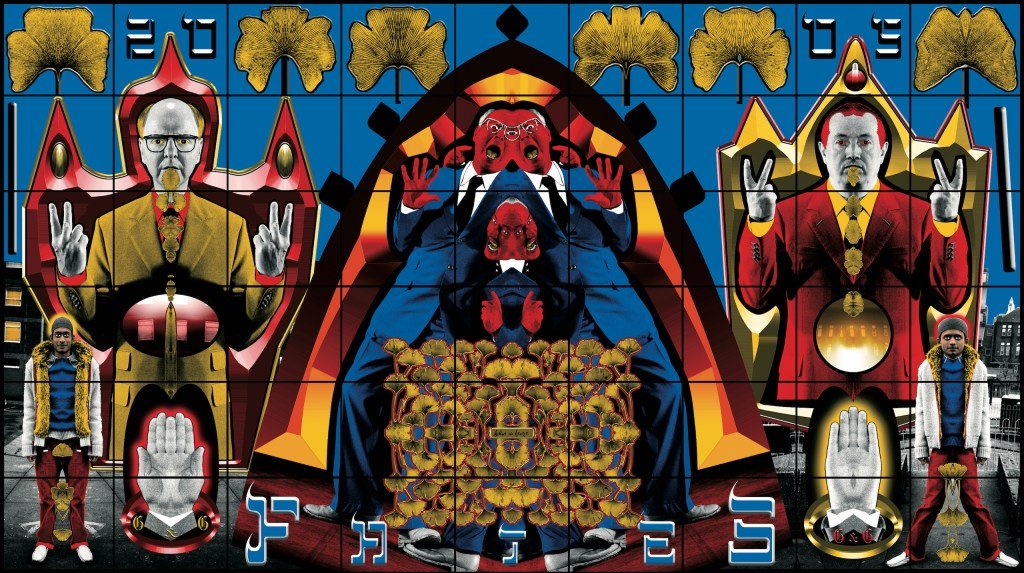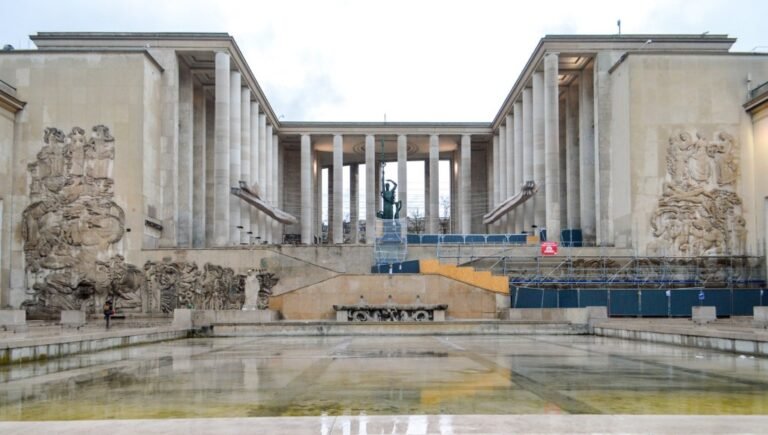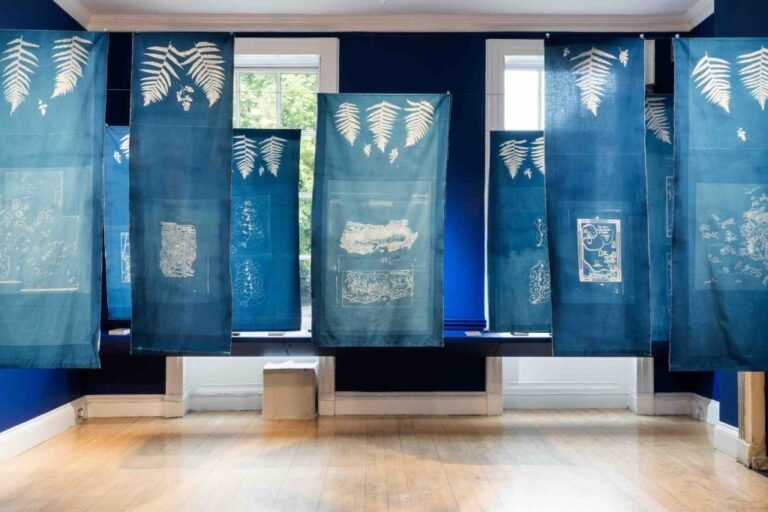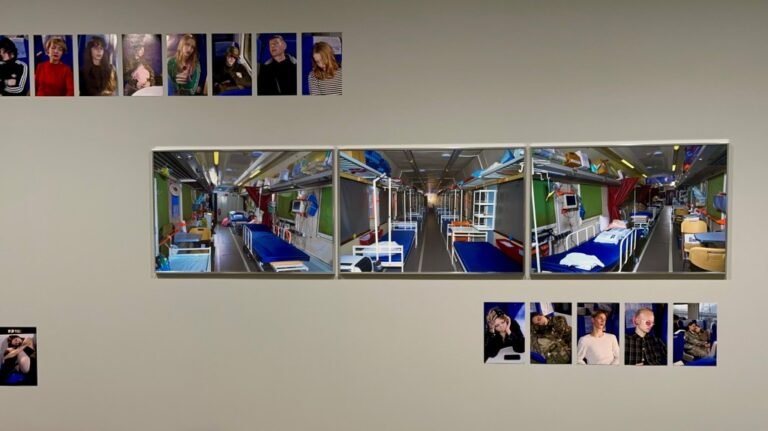

LONDON — Who are — or, better, what is — Gilbert & George? British-born George Passmore (the taller one) and Gilbert Prousch, the shorter Italian one from San Martin de Tor in the South Tyrol province, met at St Martins School of Art in 1967. In 1969 they donned suits tailored in an already vintage style (the tweed three-piece that became their uniform), slathered themselves in multicolored metallic paint and sang “Underneath the Arches.” This was the first iteration of themselves as artwork. Since then, the oddball duo in archaic English dress have lived and worked together in East London as perhaps one of the original, most complete, and longest running examples of performance art. They speak as one, are married, and appear together nearly all the time, but always as their own art.
The problem with being the artwork, one would think, is that it is financially and practically unsustainable as a career (at least without a decades-long demand for singing sculptures). Thus out of necessity they turned to visual output: large-scale photomontages composed of smaller panels, like stained glass windows, always featuring the two men. Judging from the lending institutions named in the Hayward Gallery’s 25-year survey, Gilbert & George: 21st Century Pictures, these works have proven to be collectible. The list includes, variously, the Burger Collection, Hong Kong, Tate; Museum of Fine Arts, Houston; and several private collections (curiously, several in Vienna), among many others.

Rachel Thomas, the Roden Chief Curator, along with assistant curators Suzanna Petot and Hannah Martin, seem to have placed the works according to the available wall shape, for the Hayward’s unusually sized and spaced walls are crammed. There are no captions listing name, date, and ownership, and the installation follows no chronological order. Each piece has a year, title, and the artists’ trademark signature embedded within it. A wall text explains how Gilbert & George explore “the fundamental truths at the heart of our existence: death, hope, life, fear, sex, money, race, religion.” So everything then. The curators intersperse text explaining how the artists “adapt sacred imagery to challenge religious belief systems” or “have always acknowledged mortality.” Their commentary is moot, for the images function less as means to explore these themes than to perpetuate the concept of Gilbert & George as the artwork, or even a brand. It is quite impressive how consistently they refer back to themselves as the OG.
They appear in every single piece, whether looming large with Mao-like enormous heads in three-quarter profile or making mock-shocked faces to the camera or facing frontally with arms outstretched in quasi-religious blessing, eyes cut out and alarmingly emphasized like so many ancient votive figurines. There is more than a whiff of idolatry in how they constantly appear as gods in their own icons. This is not to say that the images are propagandistic: they are filled with cheek, humor, provocation, and irreverence that is at times disarmingly charming. The standardized black-lined window format evokes the panels of a cartoon, with contrasting oversaturated colors to match: here, Gilbert & George are sleeping on a park bench; here, they’re adventuring through the drug-addled streets of Britain. Large scale, vivid, with just enough reference to big themes such as sex, death, and religion, they tick all the boxes a contemporary collector would want. It feels as if they have made collectible editions of themselves.

Just enough reference, because — befitting their blaring slogans that shout “No Nazis,” “Homo Riot,” “God loves fucking! Enjoy” (all capitalized, naturally), printed in the infamous British tabloid-style font and accompanied by examples of posters used on A-boards — the works provide no more depth or analysis than the newspapers they mimic. They do not offer a stance or interpretation, or even a jumping off point, as much art attempts to do. Like the singing sculpture, the images just exist. What do Gilbert & George actually think of all these incredibly pertinent and alarming issues plaguing society? To ask that question is to miss the point, darling.
The cult of Gilbert & George continues in the gift shop, where merchandise has gone to town on all the key elements that form their brand: cheeky irreverence in a wooden swear box (“Pay up and f**k off”), duo bookmarks (what do you mean, they don’t both read the same book at the same time?), police-style tape emblazoned with “Homo riot,” and pins that say “free dick.” A little like Jeff Koons, who speaks of the meaning in his works like a true Pop Art salesman, with a Cheshire grin, you have to admire Gilbert & George’s total dedication to being the art: a peculiarly dry and British double act.





Gilbert & George: 21st Century Pictures continues at the Hayward Gallery, Southbank Centre (Belvedere Road, London, England) through January 11, 2026. The exhibition was curated by Rachel Thomas, Suzanna Petot, and Hannah Martin.


